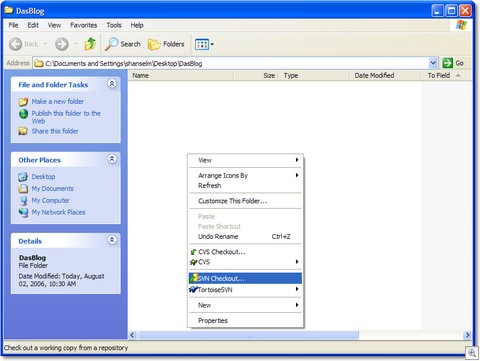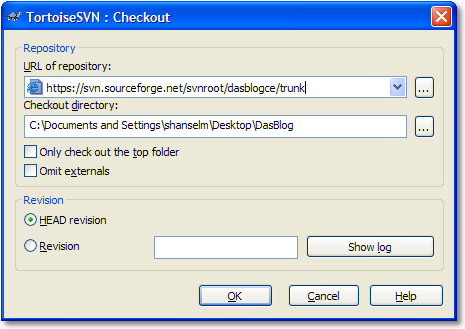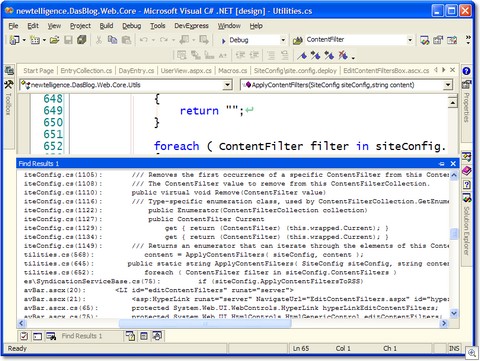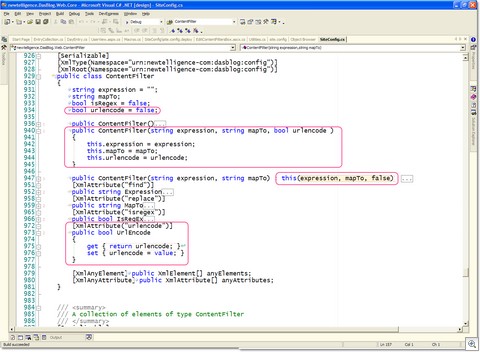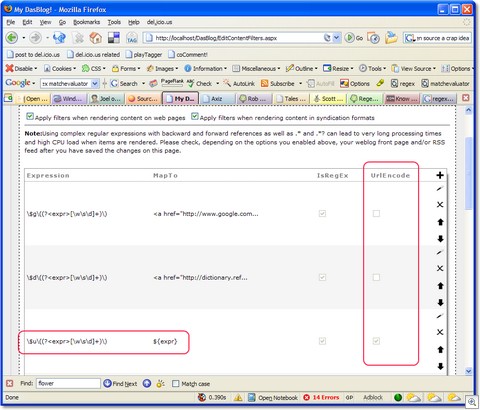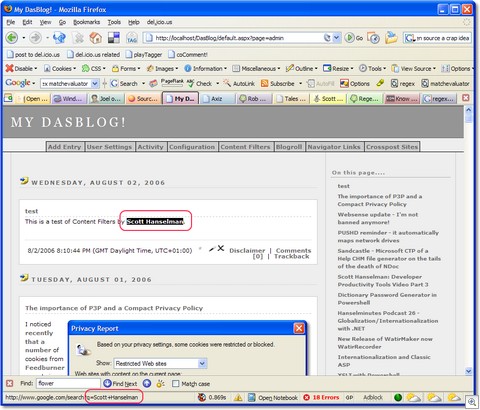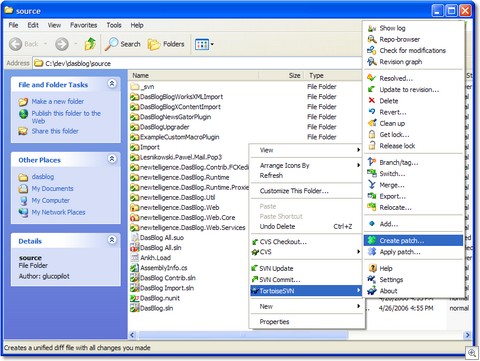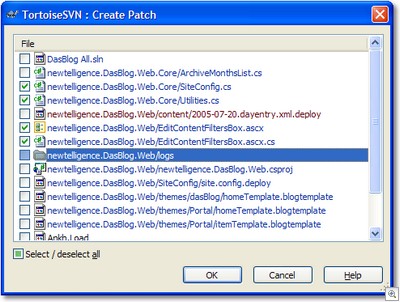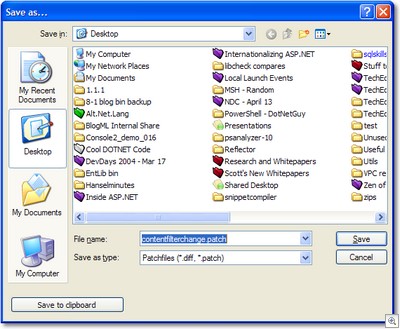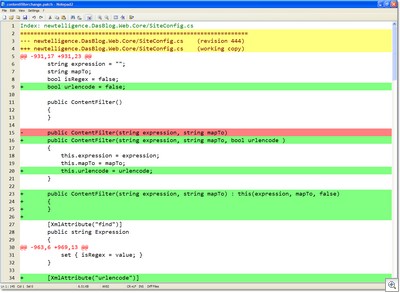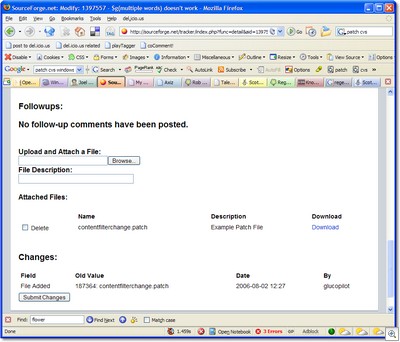Replacing Start Run - The Quest Continues
So many ways to launch programs. A good launcher doesn't just launch, it also auto-completes paths for you, starts your search engine or browser and generally saves you 15 minutes a day. No need to learn all the hotkeys like those Keyboard wonks who try to guilt you. Just learn ONE and make it do everything.
Given these offerings, if you open your Start Menu at all, at any point in the day, you're doing something wrong. Try them all, pick one, and save 15 min * 5 days * 52 weeks = 65 hours a year you'd have spent futzing around in your Start Menu*.
* These numbers came straight out of my butt.
- Slickrun - still the sexy favorite, this little floating magic bar keeps me moving fast, launching programs, macros and explorer with it's shiny simplicity.
Tell them I sent you. ;)
- SmartStartMenu - Shaun Harrington has created this elegant little application that lives in the task bar and automatically indexes the list of items in your Start Menu for quick access with the speed of AutoComplete.

It will take system commands, paths to launch explorer, even UNC paths. Launch anything on your system with less than 4 keystrokes. It also adds new context menus to Explorer like CopyPath and Open in DOS box to Explorer.
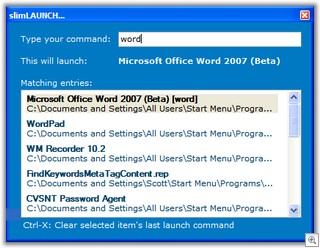 Martin Plante, hot off his gig at Xceed has created slimKEYS, a "universal hotkey manager" with a simple .NET plugin architecture. If you've got ideas or thoughts, visit the slimCODE Forums.
Martin Plante, hot off his gig at Xceed has created slimKEYS, a "universal hotkey manager" with a simple .NET plugin architecture. If you've got ideas or thoughts, visit the slimCODE Forums.
Have you ever wanted to bind something to Shift-Ctrl-Alt-Window-Q but didn't know how to grab a global hotkey?
This will launch programs, watch folders, and find files. It has great potential as more and more plugins appear.
The current version already comes with the following built-in plug-ins:- slimSIZE: Change the current window's position, size or monitor location to any area of your choice.
- slimLAUNCH: Open applications, documents or folders by typing a few letters from their name.
- slimVOLUME: Display the volume level when you use your keyboard's volume control.
- Colibri - The closest thing so far, IMHO, to Quicksilver on Windows, although this little gem has a slow startup time, it runs fast! It's being actively developed and promises integration with a dozen third party programs. It also formally supports "Portable Mode" for those of you who like to carry your apps around on a USB key.
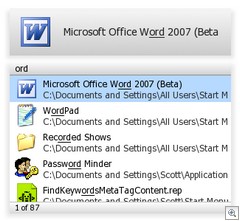
- Launchy - Another do it all application, this one Open Source and written
entirely in .NET, Launchy binds to Alt-Space by default. This app also has the potential to be Quicksilver like if it start including support for stringing together verb-noun combos. It's pretty as hell and totally skinnable (there's TWO Quicksilver skins included!)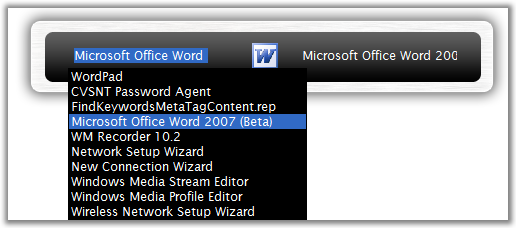
- AppRocket -this little bar sits at the top of your screen, popping down an active list of Bookmarks, Programs, Music, Web Queries and more. It's unclear if this tool is being enhanced for future versions as folks have reported not hearing from the company in a while.
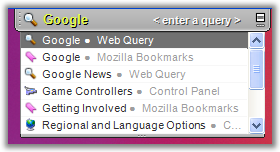
- ActiveWords - Arguably the most minimal of these launchers (as it can have no UI at all if you like!), but the most configurable. ActiveWords watches everything you type, in every application, so anything you've just typed could potentially be used by you to launch a program, a macro, send email, or give you Auto-Correct in any application. Check out their screencast/demos and their scripting language. It also is the only launcher (I've seen) with explicit support for the Tablet PC and allows ink to trigger an "Active Word."
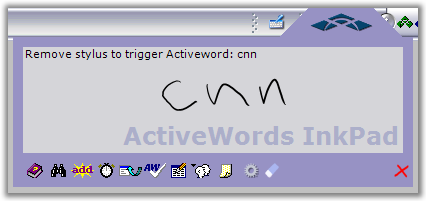
- Dave's Quick Search Bar - Written orignally in JavaScript and now written in magic and ensconced in voodoo, this little Toolbar sits in your Windows Task bar (or wherever you choose to drag it) and supports a huge community of macro writers who've enabled it as a Calculator, Web Searcher, People Finder, Currency Converter and literally hundreds of other tasks via simple to write plugins. Very actively developed and on the web for over 5 years (that's like 100 people years).

It even has a Search Wizard to create your own web searches by example.
UPDATE: I forgot a few that were totally worth mentioning. My bad.
- Google Desktop -
 Google Desktop has an option that let's you use it as a quick program launcher along with fantastic search abilities by tapping Ctrl-Ctrl.
Google Desktop has an option that let's you use it as a quick program launcher along with fantastic search abilities by tapping Ctrl-Ctrl. 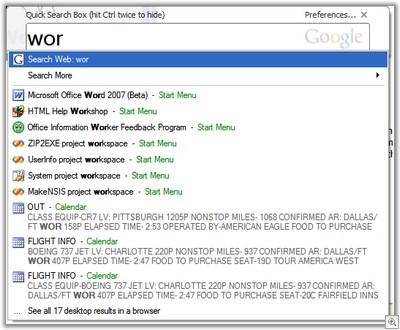
- Find and Run Robot - Lightweight, small, quiet until you need it. This little application allows for tuneable heuristics to make it work like you think. Demo Screencast here.
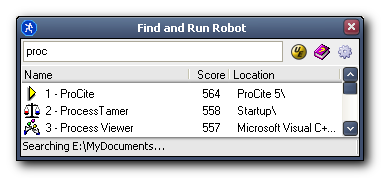
About Scott
Scott Hanselman is a former professor, former Chief Architect in finance, now speaker, consultant, father, diabetic, and Microsoft employee. He is a failed stand-up comic, a cornrower, and a book author.
About Newsletter

 My
My 


